LEARN DTF
View all-
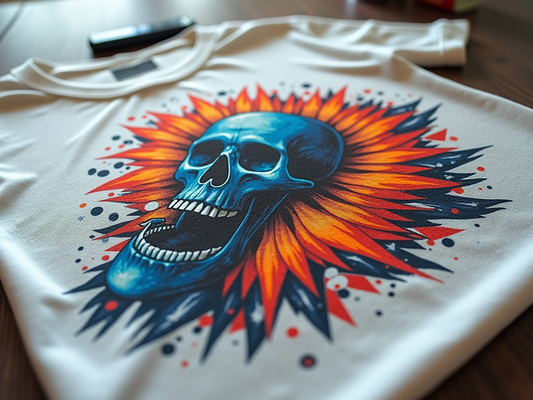
Don’t Get Fooled: The No-Nonsense Guide to Heat...
With so much conflicting information out there, it’s easy to get overwhelmed by the dos and don’ts of heat pressing DTF transfers on polyester. We’ve seen it all: the YouTube...
Don’t Get Fooled: The No-Nonsense Guide to Heat...
With so much conflicting information out there, it’s easy to get overwhelmed by the dos and don’ts of heat pressing DTF transfers on polyester. We’ve seen it all: the YouTube...
-

The Ultimate Guide to DTF Printing: Everything ...
Direct-to-Film (DTF) printing is revolutionizing the textile printing industry with its versatility, cost-effectiveness, and ability to produce vibrant, durable prints on a variety of fabrics. Whether you're a seasoned professional...
The Ultimate Guide to DTF Printing: Everything ...
Direct-to-Film (DTF) printing is revolutionizing the textile printing industry with its versatility, cost-effectiveness, and ability to produce vibrant, durable prints on a variety of fabrics. Whether you're a seasoned professional...
-
Mastering DTF Transfers: Achieve Perfect DTF Pr...
Have you ever wondered how some small businesses create stunning, high-quality custom apparel that rivals the big brands? The secret lies in a game-changing technology: DTF (Direct-To-Film) printing. This cutting-edge...
Mastering DTF Transfers: Achieve Perfect DTF Pr...
Have you ever wondered how some small businesses create stunning, high-quality custom apparel that rivals the big brands? The secret lies in a game-changing technology: DTF (Direct-To-Film) printing. This cutting-edge...
-
How to Heat Press DTF Transfers on T-Shirts: De...
What if I told you that a simple shift in your printing process could turn your creative hobby into a booming business? Imagine transforming plain t-shirts into vibrant, custom masterpieces...
How to Heat Press DTF Transfers on T-Shirts: De...
What if I told you that a simple shift in your printing process could turn your creative hobby into a booming business? Imagine transforming plain t-shirts into vibrant, custom masterpieces...
DTF Transfer Business

How AI and DTF Printing Are Changing Custom T-S...
AI design tools like ChatGPT combined with DTF printing revolutionize custom t-shirt creation in 2025. This approach offers affordable, fast, and professional-quality designs on diverse fabrics. With easy-to-use software and...
How AI and DTF Printing Are Changing Custom T-S...
AI design tools like ChatGPT combined with DTF printing revolutionize custom t-shirt creation in 2025. This approach offers affordable, fast, and professional-quality designs on diverse fabrics. With easy-to-use software and...
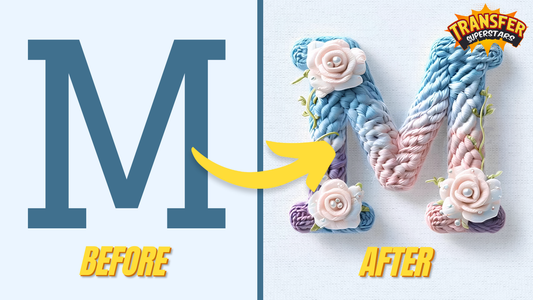
AI Custom Fonts for T-Shirt Design: Transform Y...
Stand out in the t-shirt market by ditching dull fonts! With free AI tools like Playground and Kittl, you can create unique, eye-catching typography in minutes. Combine these designs with...
AI Custom Fonts for T-Shirt Design: Transform Y...
Stand out in the t-shirt market by ditching dull fonts! With free AI tools like Playground and Kittl, you can create unique, eye-catching typography in minutes. Combine these designs with...
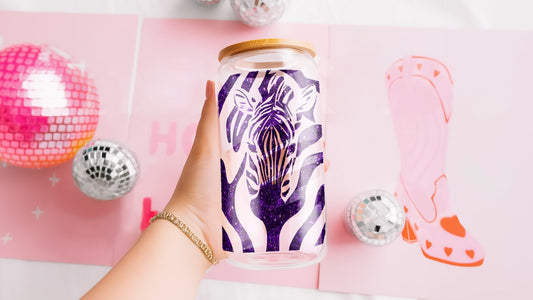
Ultimate Step-by-Step Guide to Starting a Profi...
Want to start a custom tumbler business on Etsy? With free design tools and UV DTF wraps, you can create stunning, durable tumblers that customers love. Learn how to design,...
Ultimate Step-by-Step Guide to Starting a Profi...
Want to start a custom tumbler business on Etsy? With free design tools and UV DTF wraps, you can create stunning, durable tumblers that customers love. Learn how to design,...
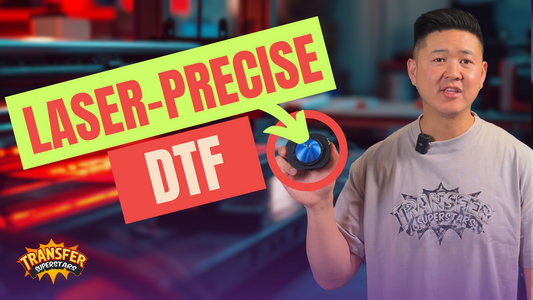
How Laser Alignment Transforms DTF Heat Press S...
Perfect shirt prints are now easy with laser alignment for DTF heat presses. Say goodbye to crooked designs and wasted materials. This simple, affordable tool ensures straight prints every time—whether...
How Laser Alignment Transforms DTF Heat Press S...
Perfect shirt prints are now easy with laser alignment for DTF heat presses. Say goodbye to crooked designs and wasted materials. This simple, affordable tool ensures straight prints every time—whether...
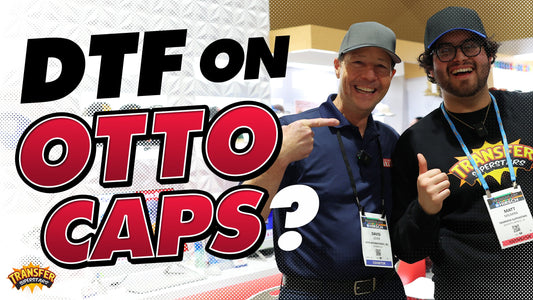
OTTO Caps: The Ultimate Guide for DTF Printing ...
Discover OTTO Caps, the perfect blank hats for DTF printing and embroidery. This guide explores their popular styles including the mid-crown five-panel, premium foam truckers, and innovative "Magic Hat." Learn...
OTTO Caps: The Ultimate Guide for DTF Printing ...
Discover OTTO Caps, the perfect blank hats for DTF printing and embroidery. This guide explores their popular styles including the mid-crown five-panel, premium foam truckers, and innovative "Magic Hat." Learn...
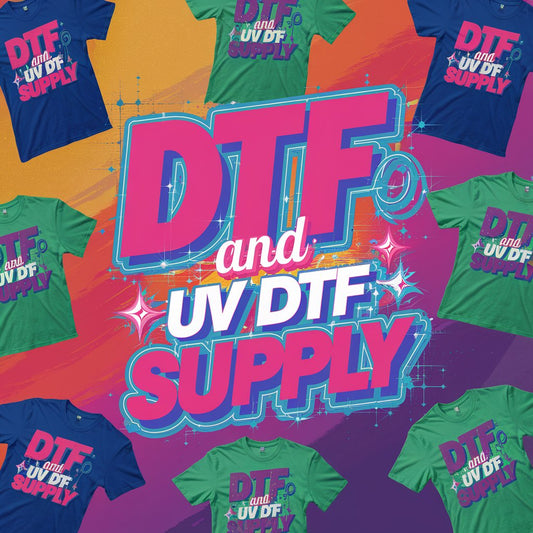
Game-Changing DTF & UV DTF Printing Technology ...
Discover the latest DTF and UV DTF printing innovations for 2025! From nine-color systems that create vibrant prints to automated cutting solutions and Epson's groundbreaking 36-inch roll-to-roll technology, these advancements...
Game-Changing DTF & UV DTF Printing Technology ...
Discover the latest DTF and UV DTF printing innovations for 2025! From nine-color systems that create vibrant prints to automated cutting solutions and Epson's groundbreaking 36-inch roll-to-roll technology, these advancements...
DTF TIPS
Essential Terminologies
DTF Terms YOU SHOULD KNOW (2024)
Here's a comprehensive list of DTF transfer, printing, business, and private label-related terminologies that everyone should know and understand. We've bolded the most important terms for your convenience. This is going to up game and definitely turn you into a Superstar.
- PET Film: A key component in DTF printing, PET (Polyethylene Terephthalate) film acts as the carrier for the ink and adhesive powder before transfer. It's known for its clarity, strength, and compatibility with water-based inks.
- Adhesive Powder: Essential for DTF printing, this finely ground powder is applied to the printed film, melting and bonding the ink to the fabric during the heat press process.
- Tier 1 and Tier 2 Processes: Refers to different levels of DTF printing techniques, from basic to advanced, affecting the quality, durability, and application efficiency of the transfers.
- Eco-Friendly DTF Printing: As sustainability becomes more important, DTF printing is evolving to include more eco-friendly practices, such as using biodegradable films and non-toxic inks.
- Hybrid Printing: Combining DTF with other printing techniques (such as DTG or screen printing) to achieve unique effects or to overcome material limitations.
- 4-Pass and 6-Pass Printing: Terms used to describe the number of times a printer's printhead passes over the same area of the film, affecting print quality and production time.
- i3200 Printhead: A popular print head model used in many high-quality DTF printers, known for its precision and reliability.
- CMYKW Printing: Extending the CMYK color model with the addition of white ink, crucial for vibrant prints on dark or colored substrates.
- Durability Testing: The process of evaluating the longevity and wear resistance of DTF prints through wash and stretch tests.
- Color Profiling for DTF: The calibration of colors in the DTF printing process to ensure accurate color reproduction across different substrates and ink batches.
- DTF (Direct-to-Film): An advanced printing method where designs are printed onto a special film and then heat pressed onto various materials.
- Heat Press: A machine used to apply heat and pressure to transfer designs from DTF films onto various substrates.
- Transfer Film: The specialized film onto which designs are printed using DTF technology before being transferred to the final material.
- Water-Based Inks: Environmentally friendly inks used in DTF printing that offer vibrant colors and excellent wash durability.
- Pretreatment: The process of preparing materials before applying DTF transfers to ensure better adhesion and print quality.
- Curing: The process of applying heat to set the ink after the design has been transferred to the material, ensuring durability.
- RIP Software: Raster Image Processing software used for color management, resizing images, and optimizing print settings for DTF printers.
White Ink: Special ink used in DTF printing to create a white underbase layer for full-color prints on dark-colored materials.
- Color Gamut: The range of colors that can be reproduced by a printer or displayed on a screen.
- Substrates: The materials onto which DTF transfers are applied, such as textiles, garments, and accessories.
- Private Label: A brand owned by a retailer or supplier that sources products from manufacturers and sells them under its own label.
- MOQ (Minimum Order Quantity): The smallest number of units that a supplier is willing to produce or sell in a single order.
- Custom Labeling: The process of adding your brand's logo, name, or other unique identifiers to products sourced from suppliers for resale.
- Screen Printing: A traditional printing method where ink is forced through mesh screens onto substrates to create designs.
- Plastisol: Oil-based ink commonly used in screen printing due to its durability and vibrant colors but less eco-friendly than water-based inks.
- Heat Transfer Vinyl (HTV): A type of material used to create custom designs that are cut using a cutting machine and then heat pressed onto fabrics.
- Direct-to-Garment (DTG): A digital printing method where designs are printed directly onto textiles using specialized inkjet printers.
- Sublimation: A printing technique where heat-sensitive dyes are transferred from paper to polyester materials using heat and pressure, resulting in permanent prints with no feel on the surface.
Must-Know Terminologies for Creating Artwork for Optimal DTF Results
When creating artwork for DTF printing, it's essential to understand the following terminologies to ensure the best results:
- File Formats: Common file formats used in DTF artwork include PNG, TIFF, and PSD. These formats support transparency and are suitable for high-quality designs.
- Transparent Background: A crucial aspect of DTF artwork where the design has no background color or pattern, allowing the substrate's color to show through.
- DPI (Dots Per Inch): A measure of print resolution that refers to the number of printed dots within one inch. Higher DPI values result in better print quality. For DTF printing, a minimum of 300 DPI is recommended.
- Resolution: The level of detail in an image, often expressed in pixels per inch (PPI) or DPI. Higher resolution images provide better print quality.
- Quality: The overall appearance and durability of the final print, influenced by factors such as DPI, resolution, ink type, and substrate choice.
- Sizing: The process of adjusting your design dimensions to fit appropriately on your chosen substrate. Proper sizing is crucial for accurate placement and appearance on the final product.
- CMYK Color Mode: Stands for Cyan, Magenta, Yellow, and Key (Black), which are the four primary colors used in most digital printers. When designing artwork for DTF printing, use CMYK color mode to ensure accurate color reproduction.
- RGB Color Mode: Stands for Red, Green, and Blue, the primary colors used in electronic displays. RGB should be converted to CMYK before printing to avoid color discrepancies.
- Color Profiling: The process of matching colors between devices (such as monitors, scanners, and printers) using standardized color profiles to ensure accurate color reproduction throughout the entire workflow.
- Vector Graphics: A type of image created using mathematical equations rather than pixels. Vector graphics are ideal for DTF artwork because they can be resized without losing quality or sharpness.
- Raster Graphics: Images made up of individual pixels, like photographs. Raster graphics can lose quality when resized, so it's essential to create them at a high resolution from the start.
Best Practices for Creating Artwork for DTF Printing:
- Create your designs in CMYK color mode to ensure accurate color reproduction during printing.
- Design your artwork at a minimum resolution of 300 DPI for optimal print quality.
- Use transparent backgrounds in your designs to allow the substrate's color to show through seamlessly.
- Size your artwork appropriately for the desired placement on your chosen substrate.
- Ensure that all text and design elements are within printable areas and clear of seams or edges that may affect print quality.
- If possible, use vector graphics for crisp details and easy resizing without loss of quality. If you must use raster images, make sure they are created at a high resolution from the start.
By understanding these crucial terminologies, you'll be better prepared to achieve outstanding results on your custom apparel projects. If you're bold enough to take the jump. Place an order for our free sample pack.
Methods and Techniques
Are you ready to become a DTF (Direct-to-Film) superstar? In this article, we'll explore the step-by-step process of DTF printing to help you turn your designs into wearable masterpieces.

DTF (Direct to Film) Printing – Step by Step Process
DTF printing allows you to create detailed and colorful designs on T-shirts and fabrics. Here's how to create a DTF transfer and make a custom T-shirt:
- Creating the DTF Transfer
- Design your artwork using graphic design software.
- Print the design onto a special DTF film using a DTF printer and DTF inks.
- Sprinkle adhesive powder over the printed design and melt it using a heat press or oven.
- Applying the DTF Transfer
- Carefully position the DTF transfer onto your T-shirt or fabric, ensuring the design is correctly aligned.
- Using a heat press, apply heat and pressure to transfer the design from the film to the T-shirt.
- Peel the DTF film away to reveal your stunning design.
- Direct to Film Finishing Press
- Give your T-shirt a finishing press using the heat press to ensure it looks polished and professional.
Key Takeaways
- DTF printing involves creating a design, printing it onto a film, and transferring it to a T-shirt.
- The step-by-step process includes making the DTF transfer, applying it to the T-shirt, peeling the film, and giving it a finishing press.
- With DTF printing, you can unleash your creativity and become a DTF superstar, creating T-shirts that leave a lasting impression.
Comparing DTF with Other Printing Techniques
Stepping into the world of custom T-shirt printing can be overwhelming, with various techniques and tools available. In this article, we'll compare DTF, DTG, and White Toner printing to help you choose the best approach for your creative projects.
DTF vs. DTG printing
DTF and DTG printing are like two talented musicians playing different instruments, each producing beautiful music but with distinct sounds.
- DTF Printing
- Quality: DTF is known for its ability to produce intricate, detailed, and vibrant designs.
- Versatility: This method works well with various fabrics, including cotton, polyester, and blends.
- Environmentally friendly: DTF printing uses water-based inks, making it a more eco-friendly option.
- Cost-effectiveness: DTF printing doesn't require expensive setup costs, making it accessible to those with limited budgets.
- DTG Printing
- Quality: DTG produces high-quality prints but may struggle with intricate designs or vibrant colors.
- Versatility: DTG is primarily suited for 100% cotton fabrics, limiting its adaptability compared to DTF printing.
- Environmentally friendly: DTG also uses water-based inks, making it an eco-friendly choice.
- Cost-effectiveness: DTG printing can be expensive, especially for smaller businesses or those just starting.
DTF Printing vs. White Toner
DTF and White Toner printing are like two chefs specializing in different cuisines, each delivering mouthwatering dishes with unique flavors.
- DTF Printing
- Color vibrancy: DTF printing excels at producing vibrant and true-to-life colors.
- No pre-treatment: DTF printing doesn't require any pre-treatment, making the process faster and more efficient.
- Durability: DTF prints are known for their longevity.
- White Toner Printing
- White ink: White Toner printing's forte is its ability to print bright white designs on dark fabrics.
Epic Halftone Digital Download
Game-Changing Technique for T-Shirt Business

Imagine you're an artist, and the world of T-shirt printing is your canvas. Now, a revolutionary painting technique called DTF printing has just been introduced, and it's about to change the way you create your masterpieces. Let's explore this game-changing method and see how it can benefit your T-shirt business!
What is DTF Printing?
Think of Direct-to-Film (DTF) printing as the high-definition TV of the T-shirt printing world. It's an advanced printing technology that lets you produce vibrant, detailed, and high-quality designs on various fabrics. In DTF printing, your design is like a temporary tattoo that is first printed onto a special film. Then, like magic, it is transferred to the T-shirt using heat and pressure.
How DTF printing works
In DTF printing, your design is first printed onto a special film. Then, using heat and pressure, the design is transferred from the film to the T-shirt or fabric, leaving a vibrant and lasting print.
For a thorough understanding of how to heat press DTF (Direct to Film) transfers, explore our in-depth Step-by-Step Guide for comprehensive details and expert insights.
Benefits of DTF printing
- High-quality prints: DTF creates detailed and colorful designs that stand out.
- Versatile: Works on various fabrics, including cotton, polyester, and blends.
- Cost-effective: Ideal for small businesses as it doesn't require expensive setup or screens.
- Environmentally friendly: Uses water-based inks, which are less harmful to the environment.
- Easy to use: Beginner-friendly and doesn't require much expertise to start
Key Takeaways
- DTF stands for Direct-to-Film.
- It's like the high-definition TV of T-shirt printing techniques.
- It creates eye-catching, detailed, and high-quality designs on a variety of fabrics.
Why is DTF Printing So Great for T-Shirt Businesses?
DTF printing is like discovering a treasure chest full of benefits for your T-shirt business. Let's dive into some of the reasons that make it so amazing:
1. Vibrant, Detailed Designs
Imagine your T-shirt is a garden, and you want it to be filled with colorful, intricate flowers. With DTF printing, your garden will look as if it came straight out of a painting. The technology allows you to print even the most complex and detailed designs, giving your T-shirts that extra touch of artistry.
2. Works on Various Fabrics
DTF printing is like a universal key that can unlock the doors to different types of fabrics. This technique works well on cotton, polyester, and even blends, giving you the flexibility to offer a diverse range of products to your customers.
3. Cost-effective for Small Businesses
If you're a small business owner, DTF printing is like finding a pot of gold at the end of a rainbow. It's a cost-effective option because it doesn't require any costly setup or screens, making it perfect for startups and businesses with a limited budget.
4. Environmentally Friendly
DTF printing is like planting trees in the world of T-shirt printing. It's an eco-friendly option as it uses water-based inks, which are less harmful to the environment compared to other printing techniques.
5. Easy to Use
Using DTF printing is like riding a bike with training wheels. It's beginner-friendly and doesn't require a lot of expertise, making it easy for you to start producing amazing T-shirts right away.
Final Thoughts
In the T-shirt business world, DTF printing is like a superstar that has emerged to change the game. With its ability to produce vibrant, detailed designs on various fabrics, and its cost-effectiveness and eco-friendliness, it's no wonder that this technique is becoming a favorite among T-shirt entrepreneurs. So, if you want to take your T-shirt business to new heights, it's time to give DTF printing a try!


